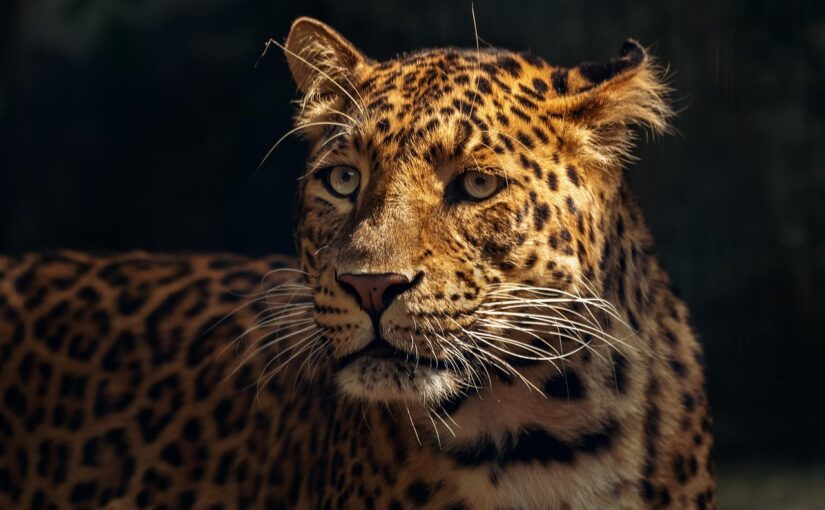Few animals embody the mystery and power of the natural world the way the jaguar does. Revered in ancient Mesoamerican civilizations as a symbol of strength, divinity, and the connection between humans and nature, the jaguar was once abundant across Mexico’s forests and jungles. Yet by the late 20th century, it seemed to be vanishing, pushed toward extinction by hunting, habitat destruction, and conflicts with communities. Now, more than a decade into a national conservation initiative, Mexico is celebrating a rare piece of good news: its jaguar population is growing.

The First Census
Back in 2010, Dr. Gerardo Ceballos, a renowned ecologist, set out to answer a daunting question: how many jaguars still roamed the country’s wild landscapes? With support from the National Alliance for Jaguar Conservation (ANCJ), he launched Mexico’s very first jaguar census. Expectations were grim, with many experts fearing the number dipped as low as 1,000.
The results, however, surprised everyone. The census revealed a population of roughly 4,100 jaguars, still endangered, but far better than feared. That moment marked a turning point. For the first time, scientists and policymakers had clear data and a baseline for action. The discovery also sparked a new vision: if Mexico could protect these elusive big cats, perhaps their numbers could grow.
A 30% Increase
Fast-forward to 2024, and the latest census brought a new reason for optimism. Over 90 days, nearly 50 researchers, equipped with 920 motion-activated cameras and supported by local communities, surveyed more than 400,000 hectares across 15 states. Their efforts revealed 5,326 jaguars, a 30% increase since the first census.
This growth is remarkable in a world where biodiversity typically trends in the opposite direction. Jaguars are now most numerous in the Yucatán Peninsula, with nearly 1,700 individuals, followed by the South Pacific region, central Mexico, the north Pacific, and the central Pacific coast. That distribution reflects both the resilience of the species and the success of conservation programs.
How Mexico Did It
Several factors explain the jaguar’s comeback. Perhaps the most important has been the protection of natural reserves where jaguars can live and hunt undisturbed. These areas act as safe havens, spaces where ecosystems remain intact and breeding populations can expand.
Another piece of the puzzle was reducing conflict with cattle ranchers. For decades, jaguars were killed in retaliation for attacking livestock. Conservation teams worked with ranchers to develop strategies that protect both cattle and carnivores, from better fencing to compensation programs.
Perhaps most surprisingly, public awareness campaigns made a powerful difference. Once an obscure species for many Mexicans, the jaguar is now one of the country’s most recognized and celebrated animals. By shifting public perception, conservationists turned a once-vilified predator into a source of pride and symbol of national heritage.
Threats That Remain
Despite these gains, the jaguar is still endangered, and its future remains precarious. Mexico’s forests continue to shrink at alarming rates: more than 600,000 hectares of jungle were cleared in the past six years alone, with 60,000 hectares lost annually in the Yucatán Peninsula. Every patch of land lost reduces jaguar territory, food sources, and potential breeding grounds.
Illegal wildlife trade poses another major challenge. Jaguar skins, claws, and teeth often appear in online marketplaces, fueling a dangerous incentive for poaching. Conservationists are pressing social media platforms to take down such content, but enforcement is slow to keep pace with demand.
Infrastructure development adds further strain. New highways cut through jaguar territory, fragmenting habitats and increasing the risk of fatal vehicle collisions. Solutions such as wildlife crossings can mitigate this, but implementation requires political will and investment.
Meanwhile, old conflicts linger. Jaguars that come too close to ranching areas still risk being hunted in retaliation. Diseases passed from domestic animals to wild cats add another layer of vulnerability.
A Battle Worth Fighting
For Ceballos and his team, the challenge is clear: maintaining current momentum while addressing these obstacles head-on. At the present rate of growth, experts estimate it could take 25 to 30 years for Mexico’s jaguar population to be secure enough to shed its “endangered” status. Yet conservationists believe this milestone could be achieved in just 15 years with stronger commitment from the federal government, private sector, landowners, and local communities.
Ceballos often frames the progress as “winning a battle in a war that is being lost.” Across the globe, biodiversity continues to decline, and species vanish every year. Yet Mexico’s jaguar story offers hope. It shows that with determination, collaboration, and smart policy, even daunting conservation challenges can deliver real progress.
Lessons for the World
The jaguar’s recovery reminds us that conservation is not an act of nostalgia, it is an investment in the resilience of ecosystems that humanity depends on. Protecting jaguars means safeguarding forests, rivers, and the vast web of life that sustains clean water, stable climates, and cultural identity.
Around the world, countless species are under threat. The lessons from Mexico are clear: accurate data is crucial, local communities must be engaged as partners, conflicts between humans and wildlife can be managed, and public awareness can turn conservation from an elite project into a national movement.
The jaguar remains a long way from safety, but its growing population is proof that change is possible. In a time when environmental headlines often paint stories of loss, Mexico’s jaguar offers something rare: hope. With continued effort, the roar of the jaguar may echo in Mexico’s jungles for generations to come.
Header image by edmondlafoto.
If you find joy in these tales of twitching whiskers and gleaming eyes, consider helping keep Whiskerito.com alive and purring. Your donation supports thoughtful research, engaging content, and the warm, wonder-filled community that makes this space what it is.
